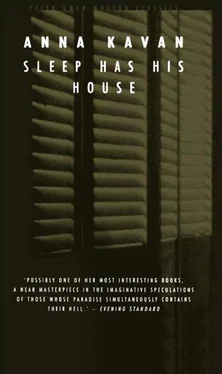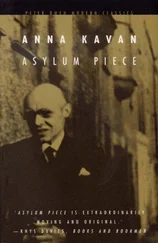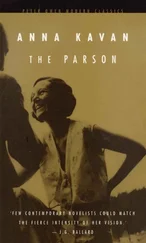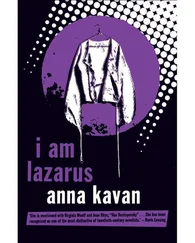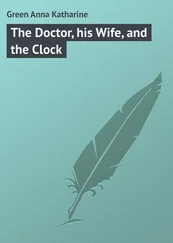Across the stage, to lively four- and eight-bar strains, the pupils dance in double line, girls ahead, following the master who is leading them with brisk yet dignified steps. Then pirouette and back with the boys leading and the master an agile black grasshopper in the rear. He waves his brittle arms like antennae, tattoos his buckled shoes in dry rataplan on the boards.
Now to different rhythm, in spaced mock-formal advancements, uneven numbers, one, pause, two three, pause, and so on, the girls sedately skip into the centre, take places on frail spindle-legged gilt chairs set by powdered and liveried menservants for each one as she approaches.
All sit, feet crossed, hands folded, in identical poses of mimed modesty.
Then the boys, all together in tin-soldier military formation, march up, left right, crisp rap-tapping metre, halt, click heels, stiff toy-soldier salute, each in front of a chair.
Girls rise.
Footmen swiftly and silently remove all chairs except one, which is left standing in the exact middle of the stage.
After prim exchange of bows, curtsies, partners dance off together, steps and deportment very hypocritically comme il faut , under the stem supervision of the master who mounts the chair and from this eminence critically watches the class, scrutinizing each couple in turn, occasionally giving a defaulter’s shoulder a smart rap with the baton which he uses to beat time to the music.
The dance, which starts off with so much decorum, gradually begins to lose its formality as the tempo quickens. Covert smiles and whispers, arch looks, spread from one pair to the next, relax into more and more open mischievousness, frivolousness, flirtatiousness. The dancing master scolds, reprimands, works himself into a frenzy, hitting out left and right with his baton, all to no purpose. He rapidly loses his dignity, loses control over the class which will not pay attention to him any longer. He becomes a figure of fun. The pupils, girls and boys, laugh and mimic him, dodging his baton as they pass by. Finally a boy snatches the baton away, dances off brandishing it mockingly. Another boy tilts the chair, tips the master on to the ground. Now more than ever like an irate grasshopper he hops among the revolving couples, chattering with rage, ineffectually trying to recover his precious baton, his symbol of authority, impotently striking promiscuous fist blows which are warded off with derision.
Feet fly faster and faster. Skirts spin faster and faster. The dance develops into a kind of age-of-innocence orgy in the midst of which dervishes the black insect-like maestro, frantically flinging in all directions his stick-dry limbs that appear to be on the point of snapping off from his body.
Down into the midst of this comes B, her green slippers seeking in time to the music the rungs of the ladder leading down to the stage. The music has gone to her head as well as her feet. Without any reserve she darts in among all those twirling dresses, those flying curls, those slapping braids, on eager toe-tips shuttling between them, soliciting every couple in turn. But no one surrenders a partner to her: and she is obliged to perform with the dancing master a feverish pas de deux , the pair of them oscillating vertiginously, caracoling, glissading: she in search of a partner, he pursuing his puissant baton which is passed by the dancers from hand to hand, tantalizingly flourished before his face, tauntingly tossed away.
At last, to crashing tumultuous chords, the fantasia terminates. But music immediately takes up again on a delicate dawn motif, very limpid, young, pure; an aubade.
With dainty tripping rustle of petticoats, brisk scissor-crisscrossing of white trouser legs, the dancers retire to the back of the stage where chairs are now arranged in a wide crescent; girls settling themselves with bird-like preening, flirt and flutter of hair, skirts, fans; boys sitting on the floor or leaning on the backs of the chairs.
Out in the centre the master, B and one danseuse who did not withdraw with the rest of the class, are dancing the tentative opening phrase of a new movement which develops the rapprochement of the two girls under the maestro’s aegis.
The dancing master has unobtrusively regained his baton and with it his dominance. Depended from his thin fingers, the baton swerves delicately in time to the music as he dances, inspiring the dance of the girls. Their four green shoes move complementarily about three feet apart. Up to now the quality of the music has been predominantly ethereal, and this feeling the dancing girls, in their spacing apart and traditional formalized posturing of head and body, also convey. It is still aloof and airy as possible, but now superimposed on the initial morning simplicity of the theme are certain elusive suggestions of provocativeness, ambiguity, as the girls approach one another more closely, touch hands, finally become linked together in their gossamer intrication.
They glide hand-in-hand in front of the master. While he grows steadily taller they both lift their identical pairs of eyes slowly and seriously towards his face, into which they look questioningly for a moment, heads tilting back to focus him as he towers upwards: then their eyes lower, sliding without dubiousness sidelong to meet each other; they look into each other’s eyes for a moment; simultaneously and very slightly and briefly they smile, and circle dreamily in exact imponderous harmony, and, with a lacing of buoyant arms, embrace one another’s waists.
The master’s head has reached up to the roof. His hair is the roof, the illumination of the stage pours out of his eyes, his thighs are gigantic buttresses shoring the building. From his fingers dangle the puppet strings. For a few seconds longer he manipulates them, jerking the green feet back and forth, propelling and twitching the rigid arms. On gilt chairs the abandoned puppets (they are like bright scraps hoarded for a patchwork quilt that have been carelessly turned out of a workbag and left in disorder) have fallen this way and that; backwards with legs in air, sideways across one another, forward with heads on knees, heads on to floor. The puppet master drops the remaining strings; the last two dolls, collapsing, droop over each other’s shoulders with stiff arms outstretched; a monstrous, dry, homy hand descends on them, pinches one negligently between thumb and first finger, lifts it up out of sight. The lights go out. And though “There’s nothing more” remains unsaid, grey draughts of emptiness drift from the stage.
THINGS at school began going wrong. I broke rules and was often in the detention-room. People started saying how difficult I’d become. Generally they were angry with me, but occasionally one of them spoke kindly and asked questions which I wouldn’t answer because I distrusted kindness. Once a doctor wanted me to tell him what went on inside my head, but I didn’t trust him either. I wouldn’t talk to him in case he was on the enemy side. How could I know that he wasn’t one of the tigers?
How could I explain that school was a machine running by clockwork, and that it was because I didn’t fit the machine that I was always in trouble? At the start I had tried to fit in. Now I’d stopped trying because I knew it was hopeless. I knew there was no place for me in the day unless I gave in altogether, and this I was determined I wouldn’t do. The daylight world was my enemy, and to the authorities of that world who had rejected me I would not submit. They had insulted and damaged me and I would never surrender to them.
A MUCH enlarged presentation of a pile of forms on a flat surface under a window. The pile is seen from the side, very monumental in the strong light, as if made of stone. The effect is somewhat that of a model cenotaph squarely set on the dark featureless plane. The top of the pile is in full blank-white, flat-white daylight. Cold white light edges the edges of certain projecting forms, striating the black-shadowed perpendicularity in a way suggestive of steps or of sharply jutting relief.
Читать дальше
